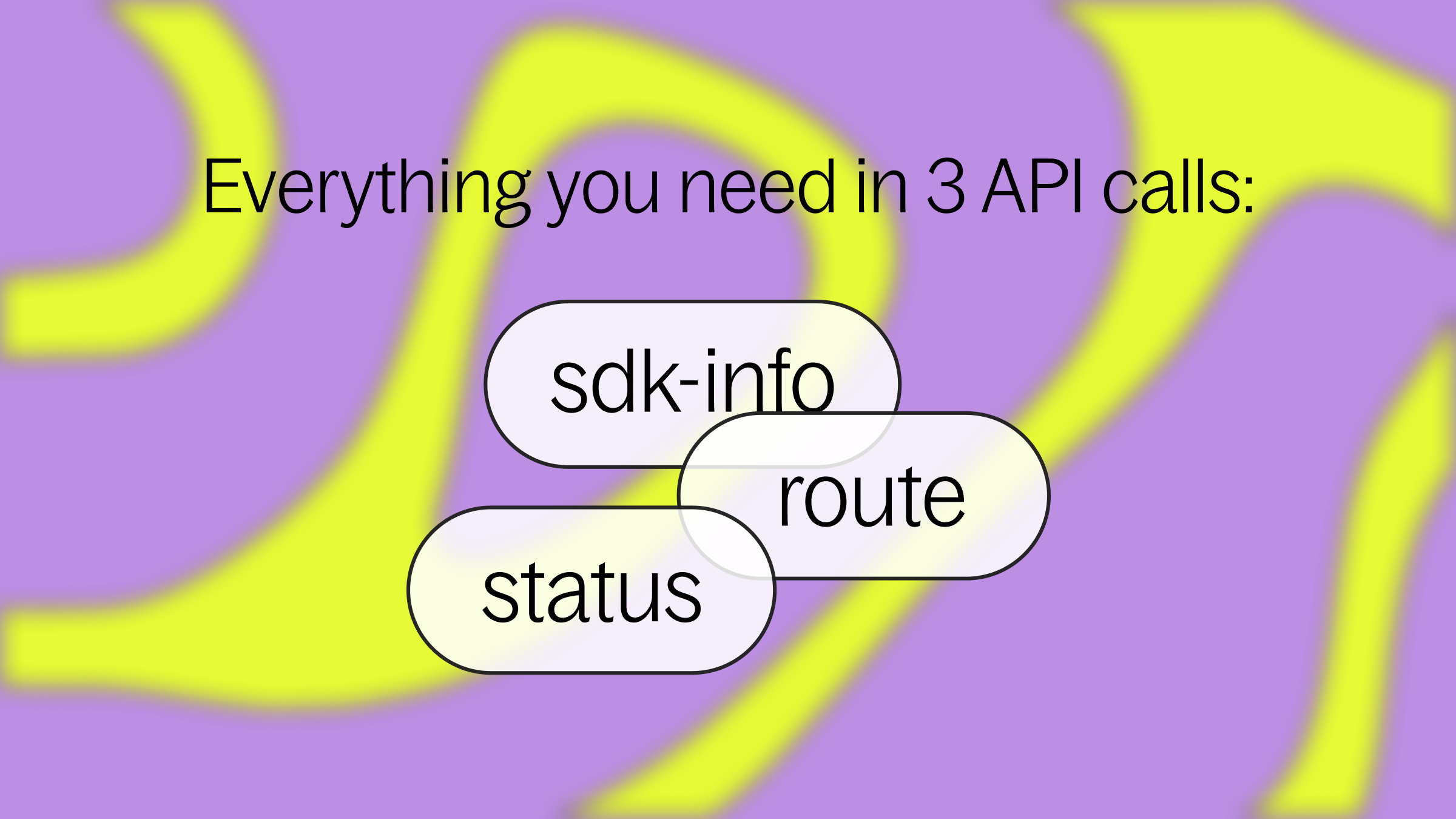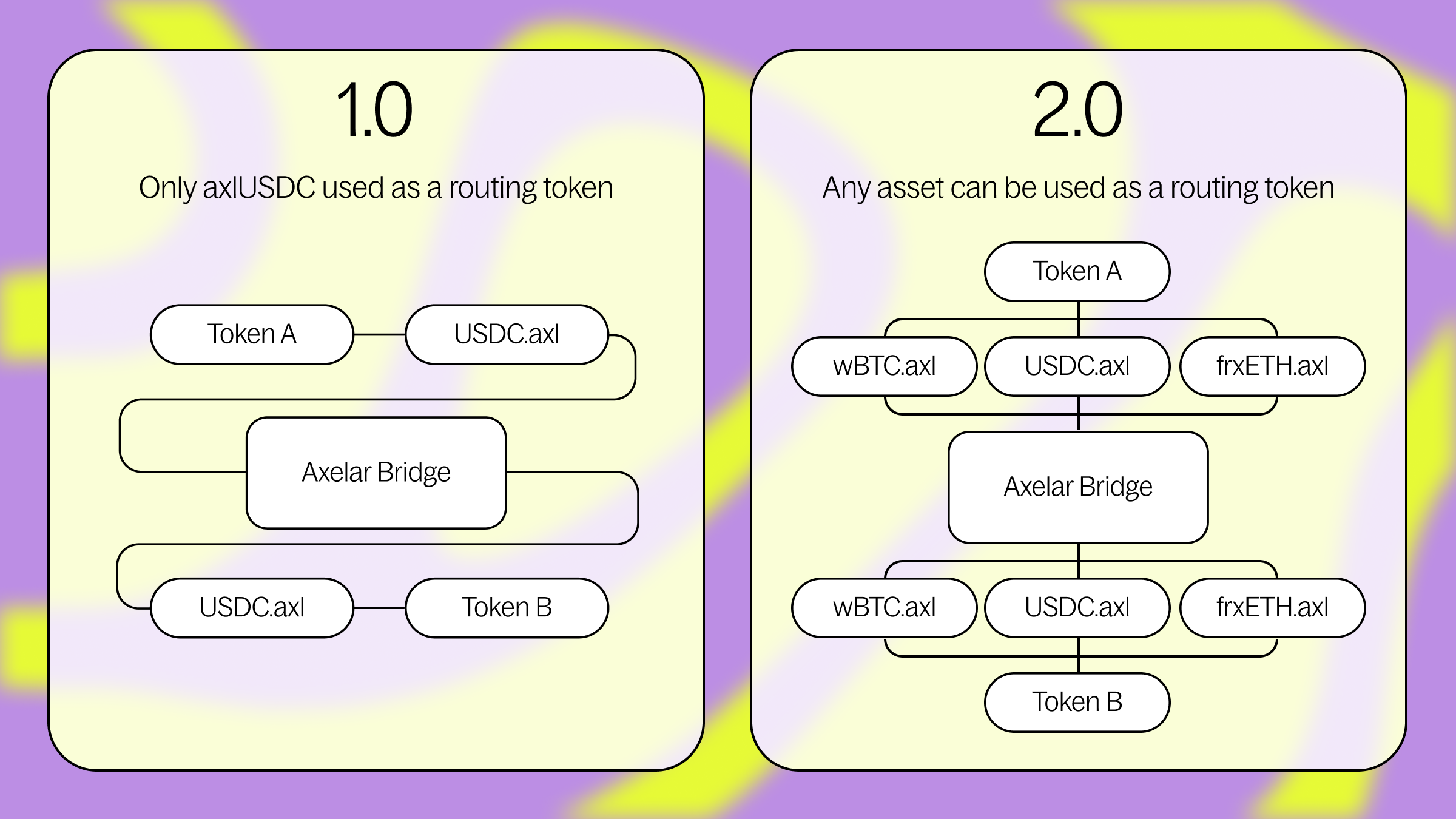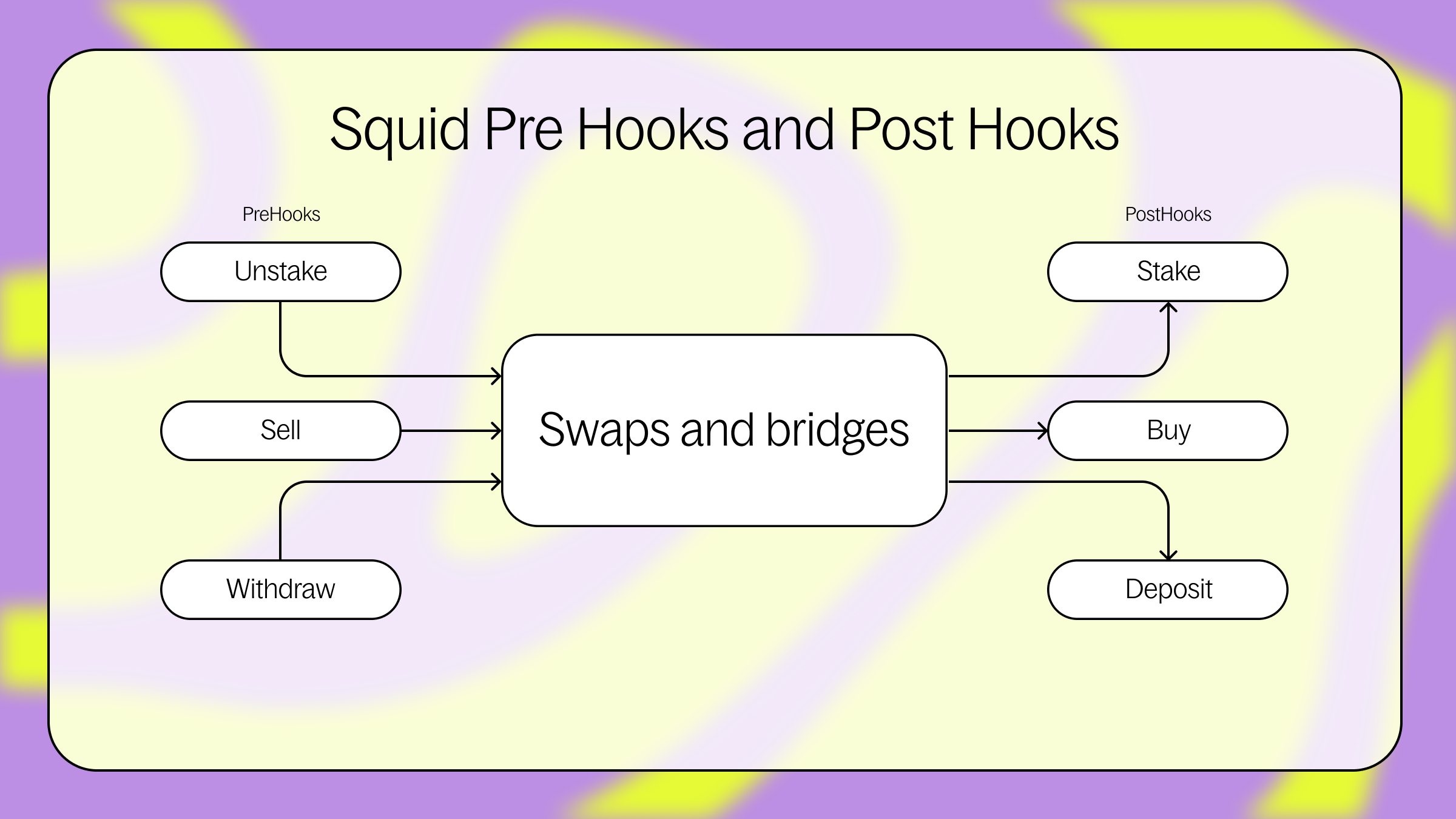The Magic behind Squid 2.0

Squid 2.0 is here
Squid 2.0 is here. The new interface is sleek at first sight and smooth at first swap, but what about the magic behind Squid 2.0? There’s an entire years’ worth of work hidden from plain sight, and it deserves to be recognized. So without further ado, here are the biggest enhancements to Squid’s backend.
To build upon the success of Squid’s seamless cross-chain swaps, we went back to the drawing board and revamped the entire architecture of the system to support any kinds of transactions on and across any blockchains. Squid 2.0 allows for automation of even the most complex transaction and bridging sequences, so users can quickly and easily accomplish their objectives in a single click.
Squid 2.0 is the only developer tool needed for projects to host users on their platforms. Everything you need is in three API calls: sdk-info route and status

But let’s break it down even more.
Graph-based architecture
At the heart of the new system is a graph-based architecture that allows for identifying the optimal routes for making cross-chain swaps, resulting in better prices for users. Whereas the 1.0 architecture routed all swaps through axlUSDC trading pairs, 2.0 allows for routing through any bridged asset or liquidity pool integrated by Squid.

Squid 2.0 is highly programmable, with multi-hop and multi-bridge transactions using on-chain and off-chain liquidity.
Pre-hooks and post-hooks
Pre-hooks and post-hooks allow for bundled transaction sequences such as unstaking an asset on one chain, bridging that asset to another chain, swapping it, and then purchasing an NFT. While all of this happens under the hood, a user would just sign a single transaction and be off to the races.

That intelligent routing also plays a key role as we expand support for a number of highly efficient 1:1 cross-chain stablecoin and RWA transfers, including Overnight Fi, Ondo Finance’s USDY, Mantle’s mUSD, Tether’s USDT, Mento’s cUSD, and Circle’s USDC.
“Crypto’s super power is interoperability, and Squid invests significant effort into being a generalized programming module for any crypto application.” - Fig
Squid 2.0 is far more extensible when it comes to integrating additional interoperability networks. The first such example is Squid’s integration of Circle’s Cross-Chain Transfer Protocol (CCTP), which, when combined with the new dYdX Chain’s integration of Squid into its front end, allows users to seamlessly onboard into native (Noble) USDC and get started on the exchange. Axelar’s decentralized network remains the backbone of Squid, but at the edges, integrations like this one allow for Squid to empower additional applications and serve more users.
Looking forward with Squid 2.0
Future use cases with Squid V2 can also be significantly more complex, thanks to the modularity of the architecture. Interested in joining 400+ projects by going cross-chain with Squid 2.0? Check out our developer docs to learn more.
